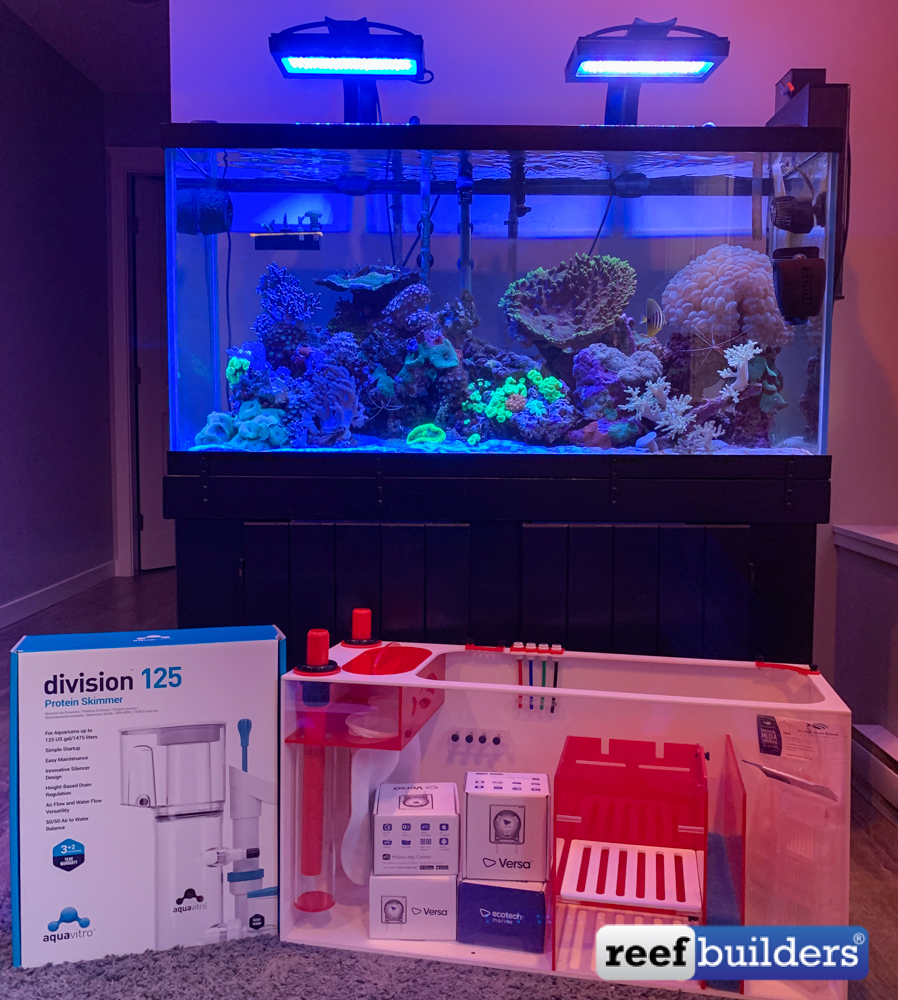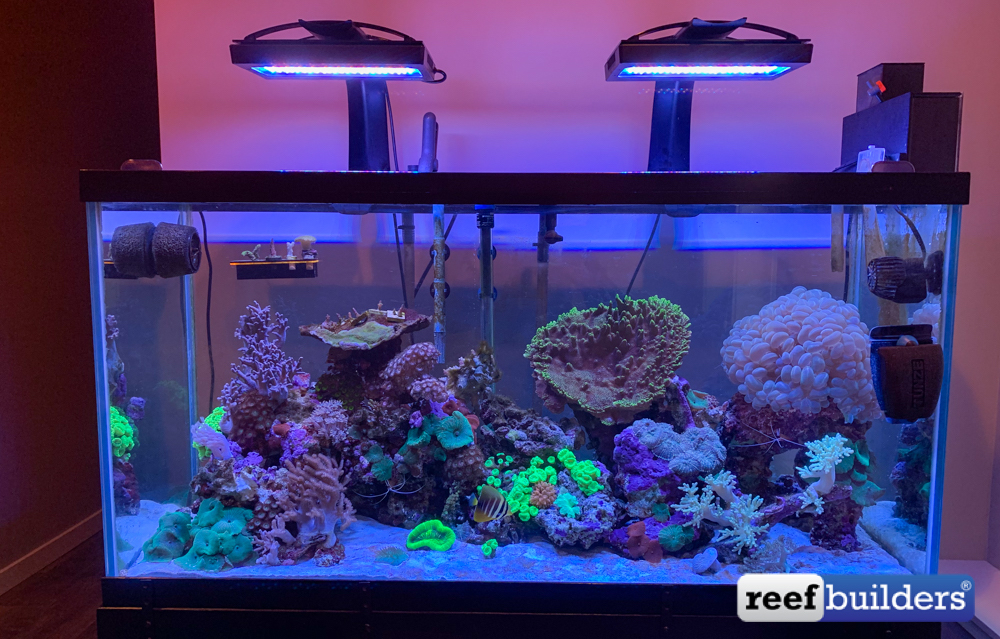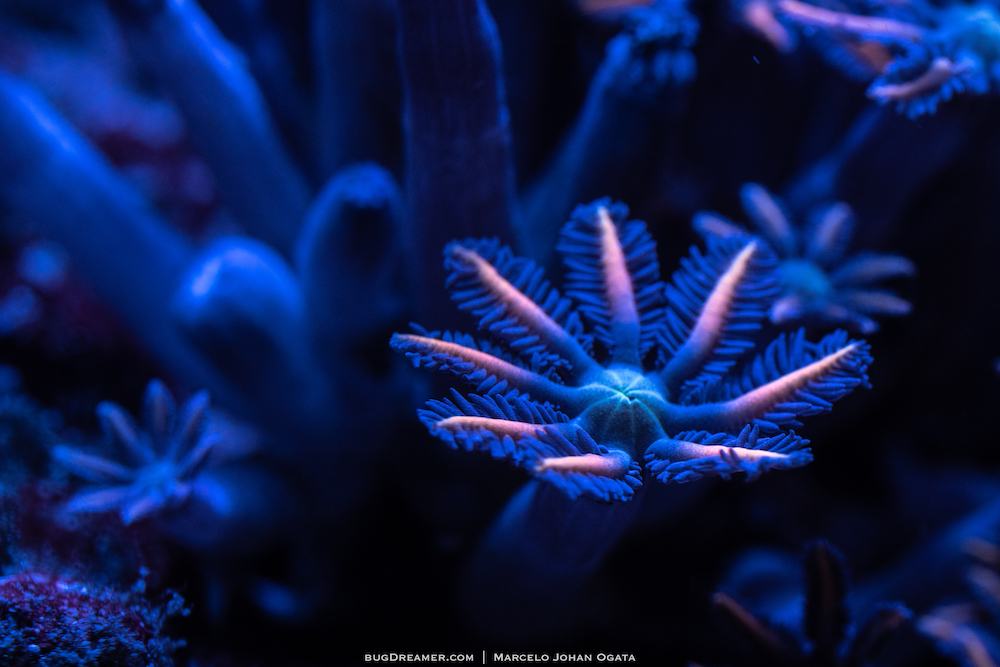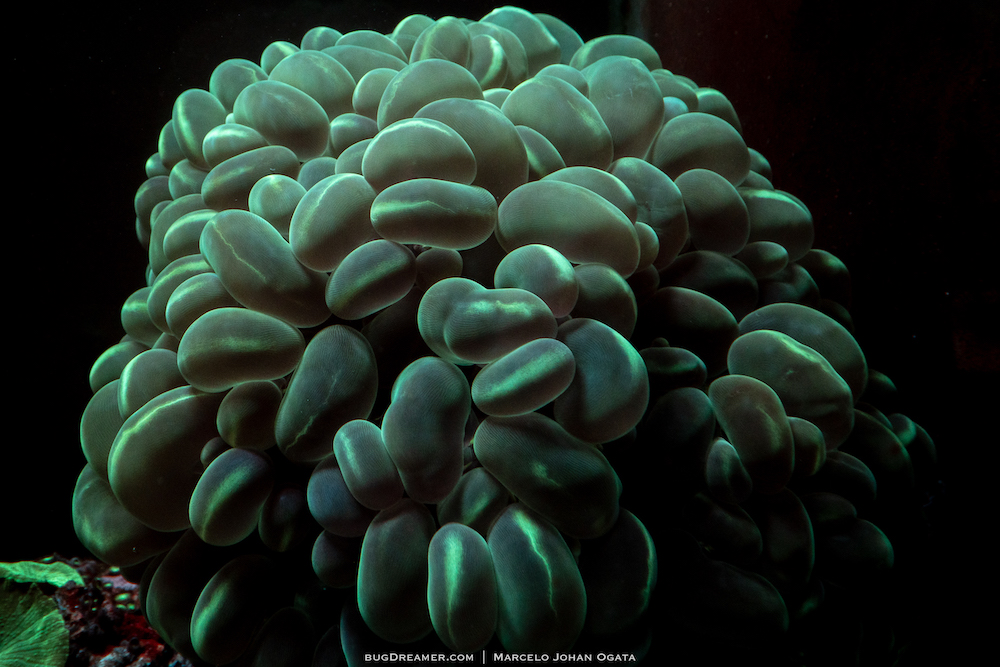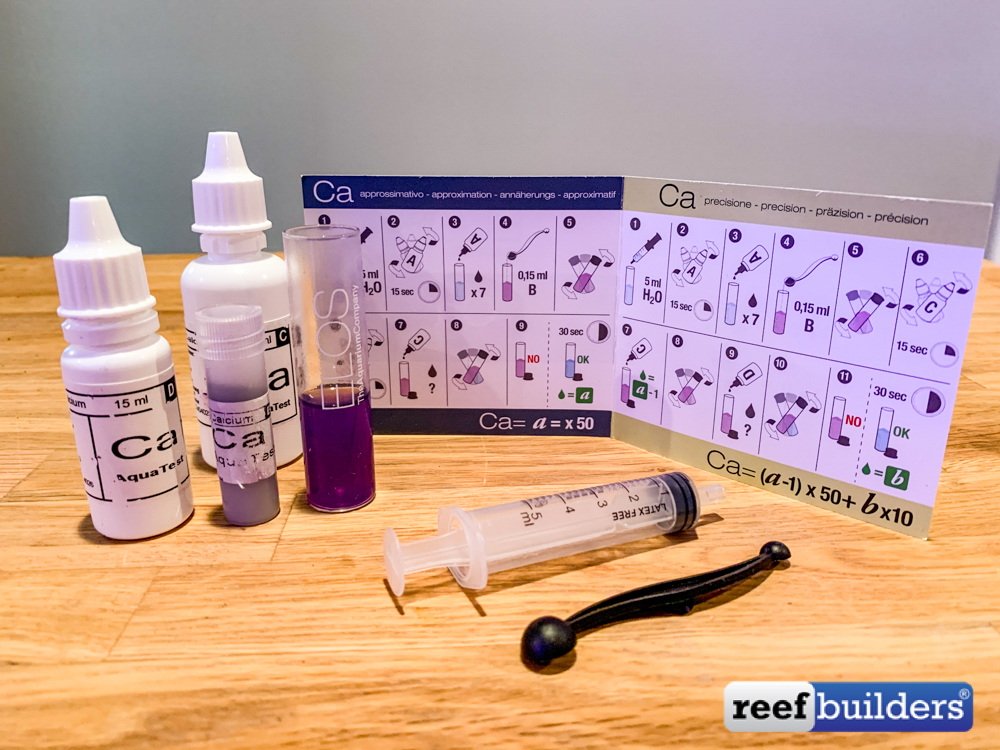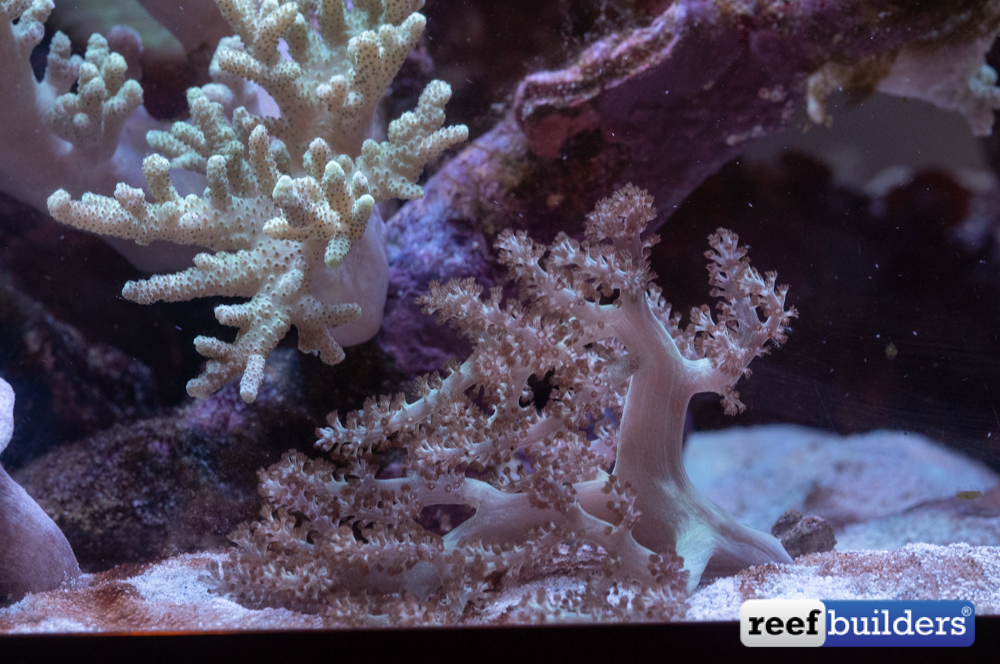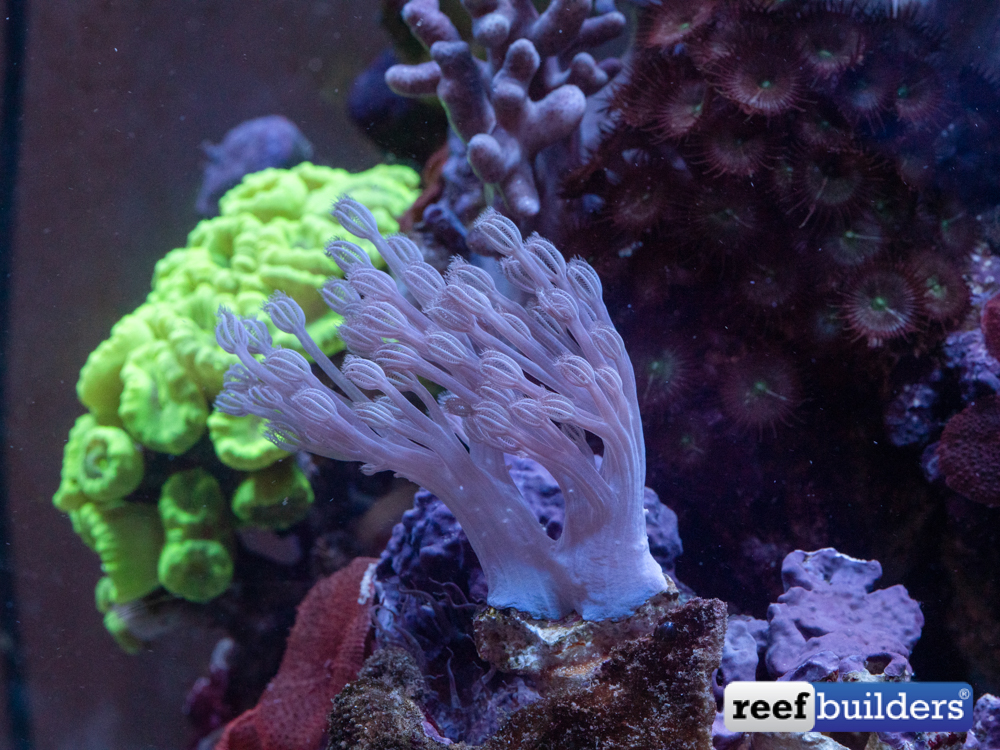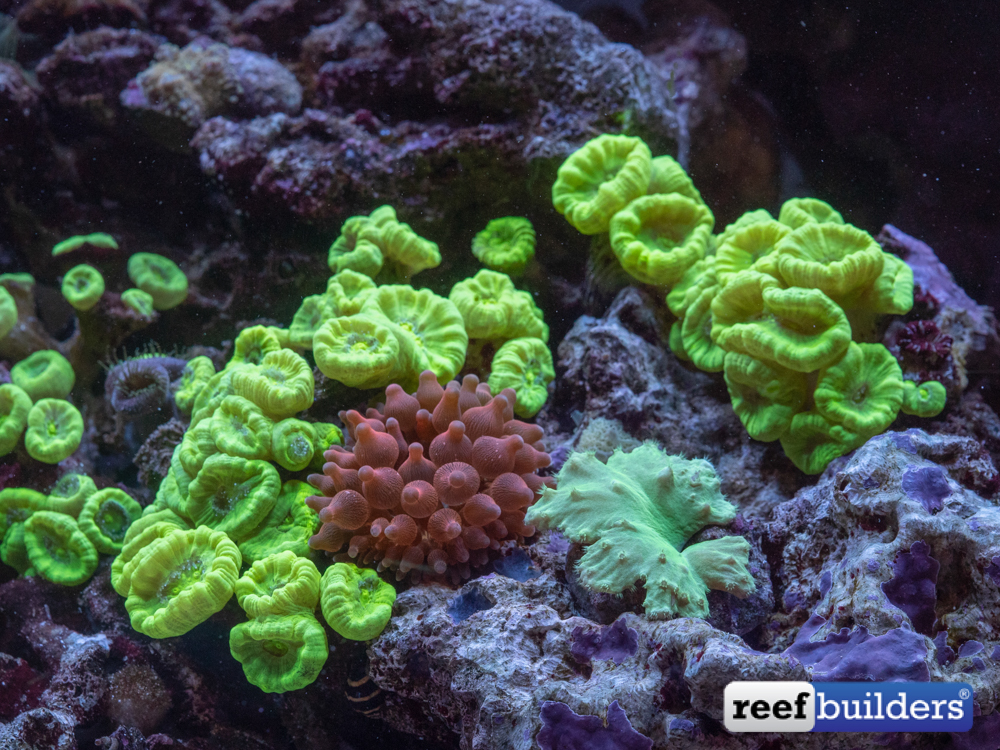As the days get shorter heading into winter we’re even more excited to come home to a bright tropical reef tank. Earlier this year we picked up a seven-year-old 90gallon reef tank and all the hard work we’ve put in is starting to pay off, however, not without some hiccups along the way.
We set up this reef tank in early July, right in the middle of Summer. Being an established reef with only a canister filter and a prescribed weekly water change regime, we decided to stick with the simple maintenance schedule and let the tank coast.
Call it neglect… But hey, it was sunny outside with lots of local hiking to explore.
After every new water change it felt like we were taking hold of the reins learning more and more about our reef. Each week our confidence grew and we were ready to start tackling the challenges of maintaining a healthy reef.
Challenges
One of the biggest red flags we noticed from day one was how quickly our tap water was turning brown when filling 10-20g buckets. We rushed to pick up an Aquatic Life Twist in 4 stage RODI unit. If you want to make any upgrades to your reef or take your reef keeping to the next level, clean filtered RODI water is a must.
Remember that part about neglect? It took us more than a month to pick up a full set of water testing kits. Our new reef tank took a back seat to summer adventures, trusting that the established bacteria would keep the tank stable with nothing but weekly water changes .
We wouldn’t recommend leaving your water parameters up to chance but this is real life, the sun was shining and the outdoors were calling. Slowly we started to notice our one big Acropora colony was visibly deteriorating and today only a few frags remain, everything else was and still is thriving.
One month, well ok maybe two months of neglect was starting to show. At least we had been using an RODI unit or this problem could have been a lot worse. Summer was coming to an end and it was time to dive headfirst into reef tank chemistry with a daily testing regime.
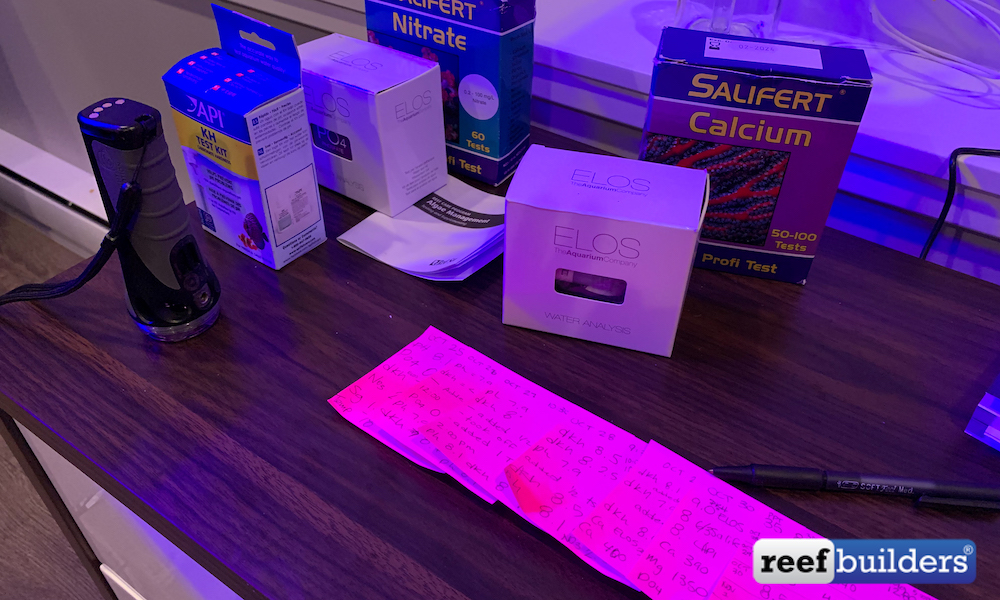
Test Test Test And Then Test Some More
Our reef tank came with a set of powdered dosing supplements and we used the calculation on the package to start understanding our tank’s consumption rate. This is when we started to notice the alkalinity swings.
While this is just a recap of our experience and not a chemistry lesson, it was still very interesting for us to take a deep dive into the interconnectedness of reef tank water chemistry. Once we took hold of the Alk consumption and learned how to balance our foundation elements Ca and Mg, we ended up switching from a powdered supplement to the liquid Red Sea supplement program.
We really love how the Red Sea products come with an informative booklet that will steer any new hobbyists in the right direction. The recipe wizard is also a helpful tool for understanding a starting point of how much of each element you will need to dose. And we’re happy to report after only a few days using the program our tank stabilized around 8dkh, 420Ca, and 1280Mg.
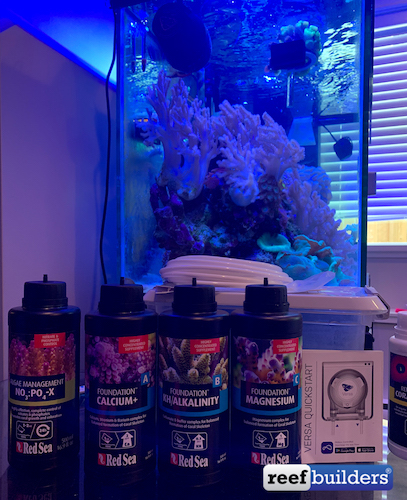
New Livestock
Of course, one of the most enjoyable parts of owning a reef tank is adding new fish and corals. We picked up a pair of high fin gobies which have established themselves right in the corner of the tank. We’re still on the search for a candy pistol shrimp to join the tribe.
We’ve also added a new star to our tank, a young sailfin tang which quickly demolished a patch of red bubble algae that was plaguing our Caulastrea candy cane corals.
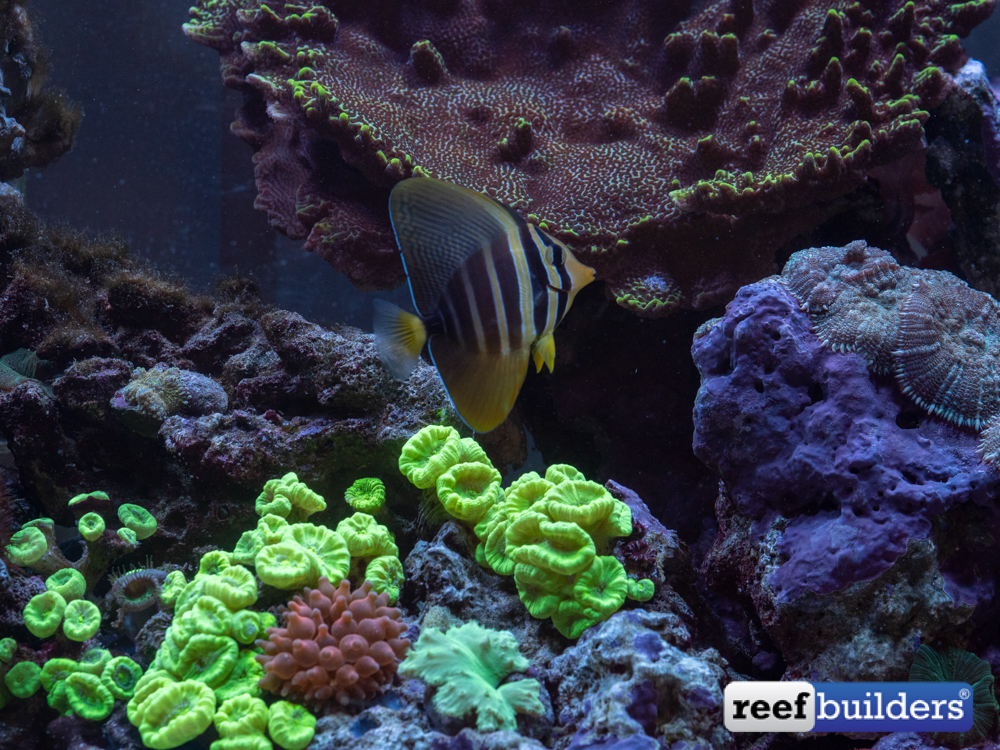
We wrote about these neon green candy cane corals in our first article and started using them as a metric for success. These corals went from the cusp of death when we first set up the tank to the happy puffy colonies there are today. And we’re sure they appreciated the spa day courtesy of our new tang.
Another exciting addition was a collection of soft corals from New Dawn Aquaculture a company here in Canada based out of Edmonton. We could tell he was a collector as his soft corals were some of the most iconic reef tank varieties.
We got lucky and picked up a set of six corals including a neon green cabbage coral, a classic Fiji yellow leather, a long polyp Japanese toadstool, a purple Vargas Cespitularia, and Cracked Ice Capnella coral. We also got a pretty orange and blue riccordea to break up all the green corals going on in our tank.
Future Goals
Now that we have testing and dosing under control, our next big step is to upgrade the filtration system including the daunting task of drilling the tank…
Upgrading the system with a new sump and protein skimmer is going to be a whole new challenge, but the foundations we have built with water testing, consumption, and dosing should make this process rewarding, and finally get rid of all the clutter.
